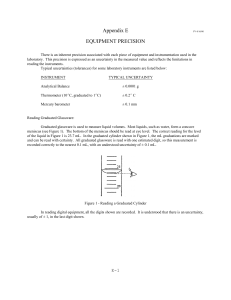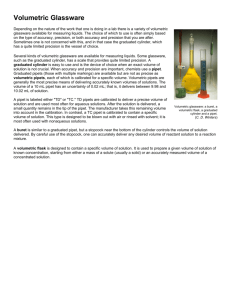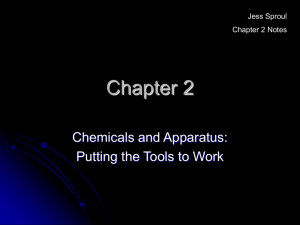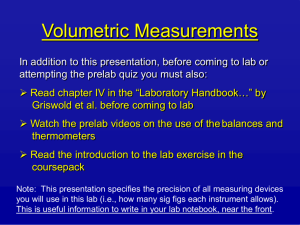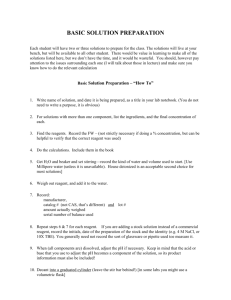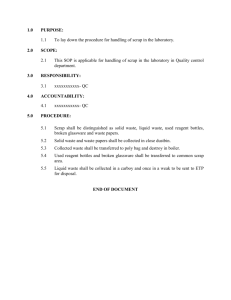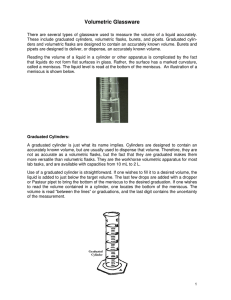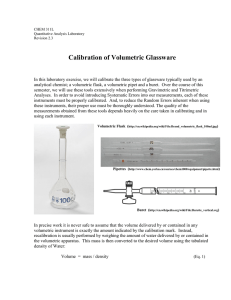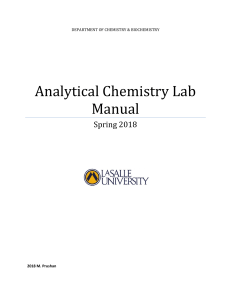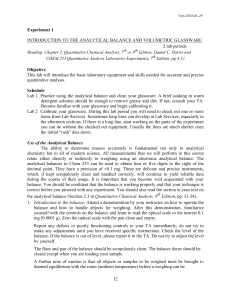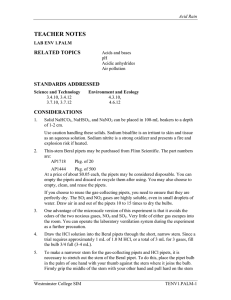Tools of the Trade: Lab Notebooks 8/25/2015
advertisement
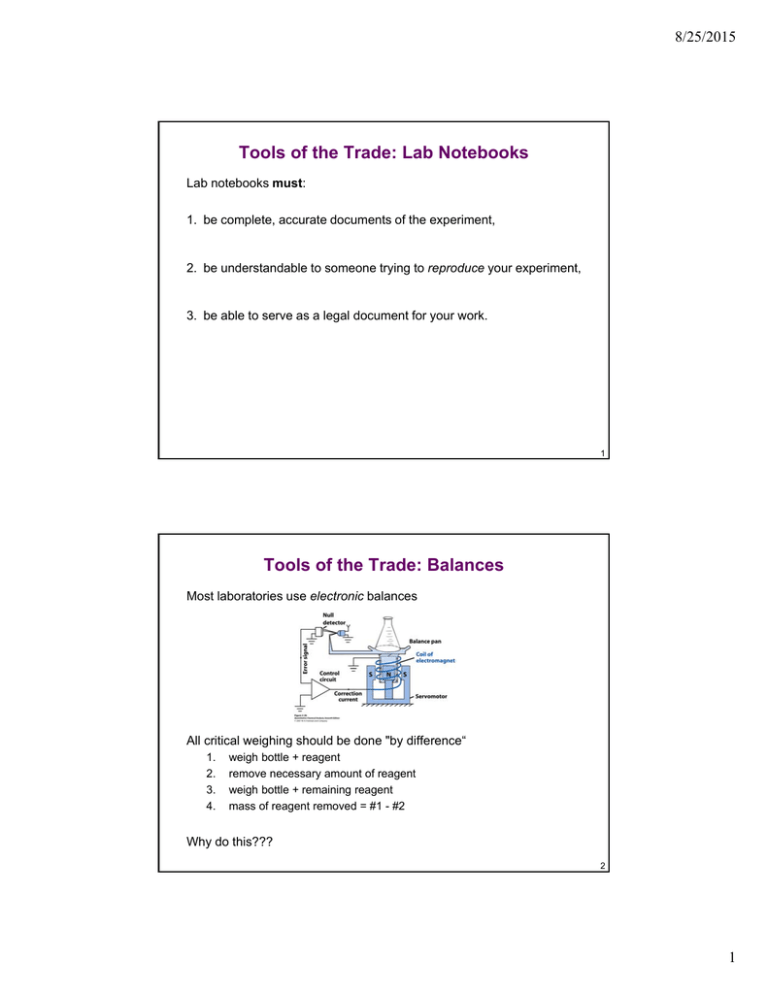
8/25/2015 Tools of the Trade: Lab Notebooks Lab notebooks must: 1. be complete, accurate documents of the experiment, 2. be understandable to someone trying to reproduce your experiment, 3. be able to serve as a legal document for your work. 1 Tools of the Trade: Balances Most laboratories use electronic balances All critical weighing should be done "by difference“ 1. 2. 3. 4. weigh bottle + reagent remove necessary amount of reagent weigh bottle + remaining reagent mass of reagent removed = #1 - #2 Why do this??? 2 1 8/25/2015 Balance Considerations Common sources of error: 1. 2. 3. 4. 5. 6. Improper sample handling Failure to allow for complete cooling Failure to close balance cover Non-leveled balance Drift due to static charges Buoyancy-induced errors Inherent in any mass measurement! Buoyancy Correction d m' 1 a dw m da 1 d m’ = mass from balance m = true mass da = density of air dw = d. of calibration weights d = d. of object weighed What does this mean?? 3 Solids Handling • All solid samples should be dried in an oven to remove adsorbed water, etc. • Use a beaker covered with a watch glass (and glass hooks) to prevent contamination. • Allow adequate cooling time before weighing. • Store dried materials in a dessicator. 4 2 8/25/2015 Glassware Considerations, Do's and Don'ts • • • • Know the history of your glassware Beware of adsorption Don't store basic solutions in volumetric glassware Know the difference between TC vs. TD TC = TD = • Realize that volumetric glassware is calibrated to a given tolerance at a given temperature. (Class A is the best, and most expensive) • Tolerance vs. Precision • Glass (and water and most other materials) undergo temperature-dependant volume changes 5 Buret Use 1. Rinse buret with 2-3 small (~5 mL) portions of solution prior to use. Rinse w/ 2-3 portions of water after use. 2. Avoid air bubbles in the tip. 3. Read buret with meniscus at eye level. Allow enough time for solution to flow down the inner walls into the bulk. 4. Read from bottom of meniscus to 1/10th of the smallest graduation. 5. Near the endpoint, "cut" drops. 6. Be sure all material that is dispensed has the opportunity to react. 6 3 8/25/2015 Volumetric Flasks • Vol. flasks are TC (typically). 1. Mix solution well before filling to the mark. 2. Fill solution so that meniscus is at the mark 3. Invert flask at least 20 times, while rotating 90 degrees each time to insure complete mixing. 7 Pipets 1. Transfer or volumetric – TD • 2. DO NOT BLOW OUT! Measuring (Mohr) • • Dispense by difference. Volume in the tip is not calibrated! 3. Blow out pipets: • • Ostwald-Folin and serological Look for ground in "ring" on end. 4. Micropipets • • Read directions for the pipet. Typically expel all solution in the tip 5. Hold all pipets vertically when filling and dispensing. 8 4

